How To Create a Homebrew Race for D&D 5e
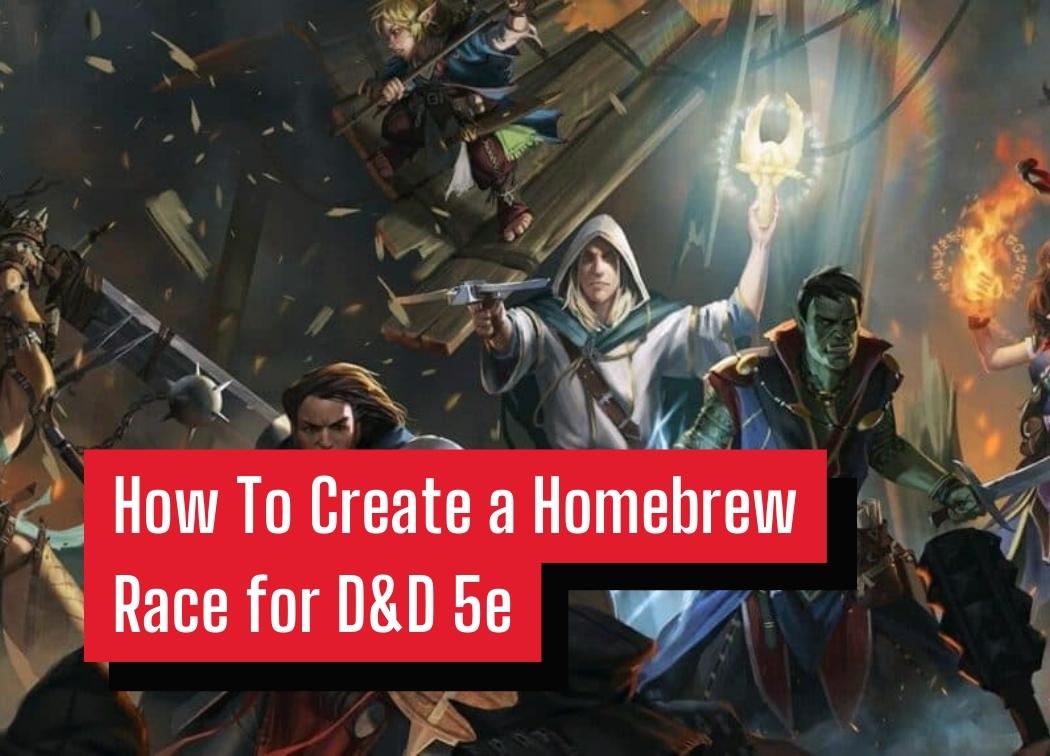
Homebrewing is a big part of D&D 5e. The game is open-ended by design and is pretty easy to work with for those that want to create new content for it. Balance is important, but the real test of a successful homebrew is if everyone at the table has fun with it.
I’ve dabbled in homebrewing stuff for my games quite a few times. I’ve even shown off an item I designed on the site before. I enjoy doing it, but the majority of what I create are magical items.
However, I’ve made a couple of homebrew races and subraces before for our homebrew setting. It wasn’t nearly as difficult as I had first thought it would be, and if anything it was pretty low-stakes compared to designing something like a class. Sure you can find some broken races out there, but that’s a different problem that I’ve covered already.
Today we’re going to talk about creating a race. Think of this as a general overview showing you what the outline of a race should be. Once you have that nailed down you just have to make a few decisions and voila, you’ve created something!
Your Homebrew Race’s Flavor
The flavor is everything when homebrewing. While it’s true you want something that fits into the game’s mechanics and isn’t brokenly overpowered or terrible, you want something that people want to use. Your homebrew race should fill a niche, yes, but it needs to be interesting while doing so!
You don’t need a ton of information either to create an interesting race – only a few paragraphs. Give a potential player a general overview of the race, their general culture, and appearance. The DM can decide from there where they fit into their setting.
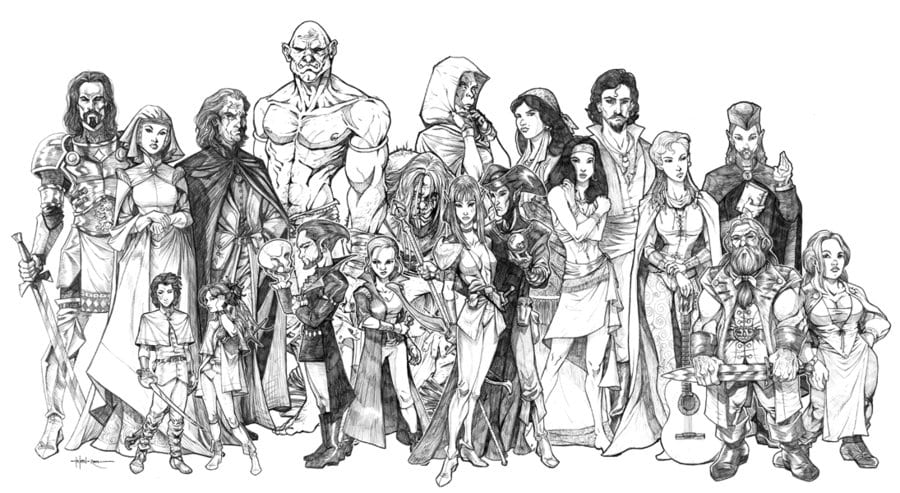
I’d recommend spending the most time focusing on the flavor of the race’s general appearance and unique abilities. These are typically the two factors that I see players look towards before anything.
Many people outright ignore lore, and honestly, that’s fine. You’re playing an adventurer, not a typical tiefling, you’re going to be unique compared to the average tiefling NPC.
However, it’s still important to set up a baseline for the race to help people get a direction for their character and for DMs to figure out how to include this race in their game.
I like to use a list of questions to help brainstorm when I’m creating something, so here are a few that helped me when creating a few races and subraces.
What do they look like?
This one is important, and there’s no wrong answer. You could create a monstrous race that’s ugly and extremely large, or you could create a beautiful forest fairy race. It doesn’t matter, I guarantee some people want to play both of these options.
What does matter is that you describe the race well. Include some unique features that make them stand out, and be sure to include pictures for people who like to have a visual cue!
What’s their civilization Like?
I’ve written a two-part article on creating a city in D&D previously and this should take a few notes out of that process. The difference is that you may not have to create the civilization.
Talk about how they live their day-to-day lives and what professions they gravitate towards. Is any of this influenced by the environment that they live in?
What about their governments. Is this a race that operates democratically or are they honor-bound to defend a monarch?
Your homebrew race’s civilization is important in that it carves out their place in the world. A player can choose to use some, all, or none of it, but as a DM I find this part very helpful.
What is their history?
List some highlights that happened to the race throughout their history – good and bad. Talking about great achievements and disastrous failures can give some perspective as to how your homebrew race’s civilization operates the way that it does.
I wouldn’t get too specific either. I would choose 3 or so significant events at most and reserve maybe a sentence or two for them. Don’t include things such as dates or names because that just restricts the lore.
You could also choose a single very significant event and give it a lot more focus. One such event could be a major accident that split your homebrew race. A large population left their civilization and this is how the subraces were formed hundreds or thousands of years later.
How are they viewed by others in their world?
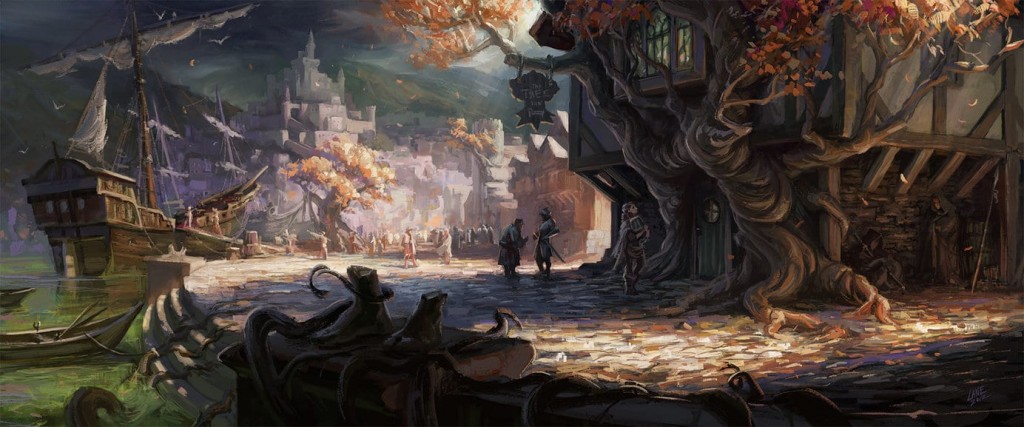
I’d rank this question up with the race’s appearance in terms of value to potential players or DMs. The best part is that this can be answered easily based on your homebrew race’s history, civilization, and important events.
Take what you’ve written up already and figure out how this has affected the race as a whole. How do others see them because of their mannerisms or their history? Figure out if everyone feels this way or if they just butt-heads with a few groups.
Are they outcasts like tieflings, or are they seen as average citizens of the world?
How are they unique?
This is the big one. This sort of leaks into our next section which dives into the mechanics of races in D&D, but it belongs here.
What is it that your homebrew race can do that published races or other homebrew races can’t? What makes them unique?
This could be anything. It could be their appearance, their abilities, etc. The important part is that you spend time making these unique features sound interesting and fun.
Mechanics of Race in D&D 5e
Ability Score Increases
While I’ve mentioned that I dislike this feature before, it’s still one that we have to respect when creating a homebrew race. Races typically get two ability score improvements (ASI), one being a +2 and the other being +1.
I would suggest choosing the ASIs after you’ve fleshed out the rest of the race. This is because when you figure out the race’s features, flavor, proficiencies, and any other mechanics you’ll have a better understanding of how the race should operate in a D&D 5e game.
For example, if your race has proficiency in stealth and has a feature that gives them bonuses while stealthing at night or has a feature that can temporarily turn them invisible you’re probably catering to a more Dexterity-focused niche.
Put the +2 into Dexterity and the +1 into something that makes sense in terms of flavor. Maybe they’re inquisitive so they’ll get a +1 to Intelligence. Carve out a niche for your homebrew race and make sure that the mechanics help a PC work within that niche.
Now not every race gets +2/+1. There are races like Humans that have +1’s in all their ability scores or +1 in 2 skills and a feat. There are also monstrous races like the orcs in Volo’s Guide to Monsters that get +2/+1 and a -2 to Intelligence.
The standard is +2/+1, but if you’re going to stray from that be sure that the rest of the race makes up for whatever power loss/gain they receive from their ASIs.
Proficiencies
In many cases, your race determines the vast majority of some of your proficiencies. You can gain proficiency in tools, skills, languages, and weapons through your race.
Most races tend to give at least 2 languages and a skill at the bare minimum. One language is always Common and the other is generally one that fits their culture. For example, dwarves know Dwarvish.
The skill is typically one that suits the flavor of the race. If they’re a race that typically makes their home in the dense jungles and is known for their hunting prowess they’ll probably have proficiency with Survival.
A lot of races give a set of weapon proficiencies. Typically these are 3-4 unique weapons. Two of them are usually simple weapons with the other one or two being martial weapons. Though you could do any combination if you wish.
Proficiencies in vehicles, instruments, and tools are generally given out through your background, but a case could easily be made for including them in your homebrew race.
Size
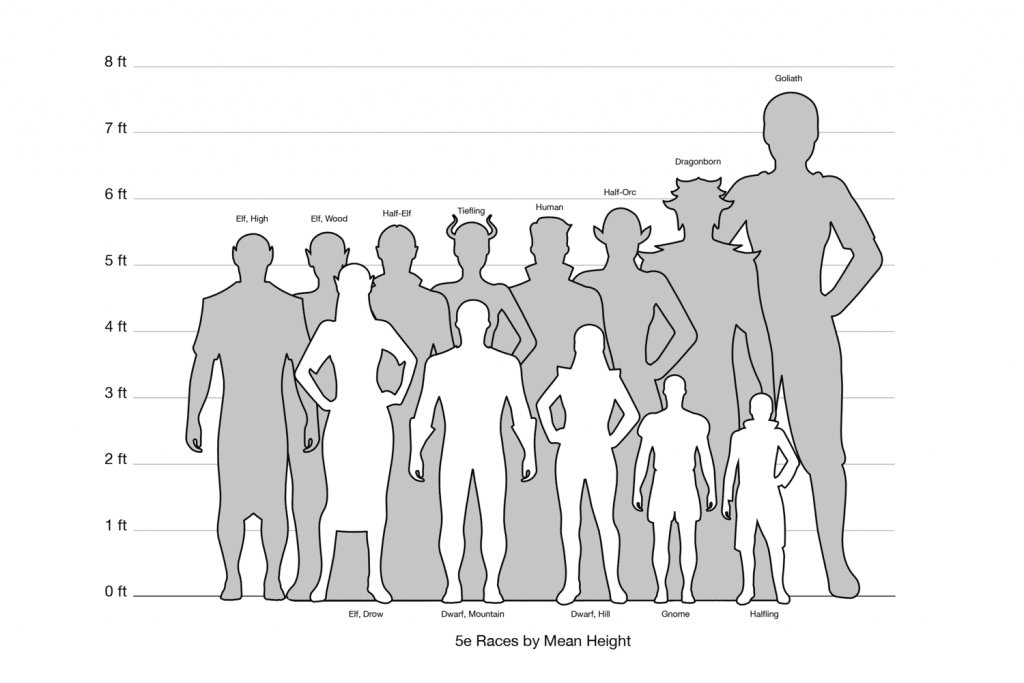
Races in 5e come in two different sizes, small and medium. Mechanically speaking both sizes take up a single square in a 5 ft. square in a grid.
The standard size is medium which is between 4 and 8 feet in height and between 60 and 500 lbs. in weight. That’s a pretty big gap when you think about it, but the majority of the standard races tend to fall within the ballpark of a real-life human being.
Medium creatures have no real disadvantages. They have 30 ft. of speed and have no limitations for carrying capacity or wielding weapons.
Small creatures are between 2 and 4 feet in height and weigh between 8 and 60 lbs. This gap isn’t nearly as significant, but you can see how much smaller these creatures are compared to the average medium-size creature.
Small creatures cannot wield weapons with the heavy property. Typically they only have 25 ft. of movement speed.
However, this is balanced out by small creatures being able to squeeze through smaller spaces than medium creatures. Plus, they can mount medium-size creatures.
Subraces
Maybe the base race isn’t specific enough for your tastes. Your homebrew race originally spurned from a single group of people but has since spread out to different biomes.
Biologically, your race is all-encompassing. Everyone has pointy ears, is roughly the same size, and has similar distinguishing features. However, over many, many years your race has changed.
Living in caves has made a certain subset of people have lighter/darker skin to blend in with the environment and their eyes have adjusted to the darkness. However, those that took to the forest have greenish or brownish skin to blend in with their environment and they’re able to traverse the tricky terrain easily due to evolution.
This is what a subrace is. It’s a subset of the race that dives into more specifics for each group in the overarching race. Because of their cultural and biological differences, they are better at different things.
Like in the example above drow gain an enhanced version of Darkvision while wood elves get an additional 5 feet of movement speed. They’re both elves so they have Fey Ancestry and other abilities that the race gives them, but they have some unique features that they gain from their subrace.
Weapon proficiencies are particularly great to tie to subraces when creating a homebrew race. Cultural differences and environmental differences may favor the use of certain types of weapons, so having proficiency tied to subrace rather than race can help establish the flavor of the race as a whole.
Unique Features
Racial features are the real meat of a race in D&D 5e. These are the effects, traits, and abilities that are unique to a race and are typically pretty useful.
Examples of some racial features are Fey Ancestry, Fury of the Small, Lucky, and Relentless Endurance. These are unique to their base race and are generally the primary reason a player would choose one race over another.
These features should provide some sort of advantage or bonus to the player once they use them. They could give them additional survivability like Relentless Endurance, or bonus offensive power like Fury of the Small. Some features like Lucky are all-around great and can help out in a ton of different situations.
These features can be as powerful as you like. For example, Lucky is a very powerful skill. To counteract this, halflings don’t get a lot of other features. Half-Orcs, on the other hand, get Savage Attacks in addition to Relentless Endurance because of how situational each one is.
The important part of these features is that they are interesting, fun, and rewarding to use. Your features along with the flavor of the race should be the reason a player wants to choose your homebrew race over another option.
Balance
Balance is important, but only after you’re satisfied with your choice of mechanics and the flavor/lore of the race. It’s an afterthought generally because as long as you’ve followed most of the outline above you’ll have something with a similar power level to the majority of races already in D&D 5e.
The real deciding factor between if a race is over or under-powered is generally going to be the features or abilities you’ve given the race.
The great part about tabletop RPGs though is that if something you make is too powerful or too weak you can talk to the affected player(s) in-between sessions and work out a solution to the issue.
Your Race Should be In-Line with Printed Races
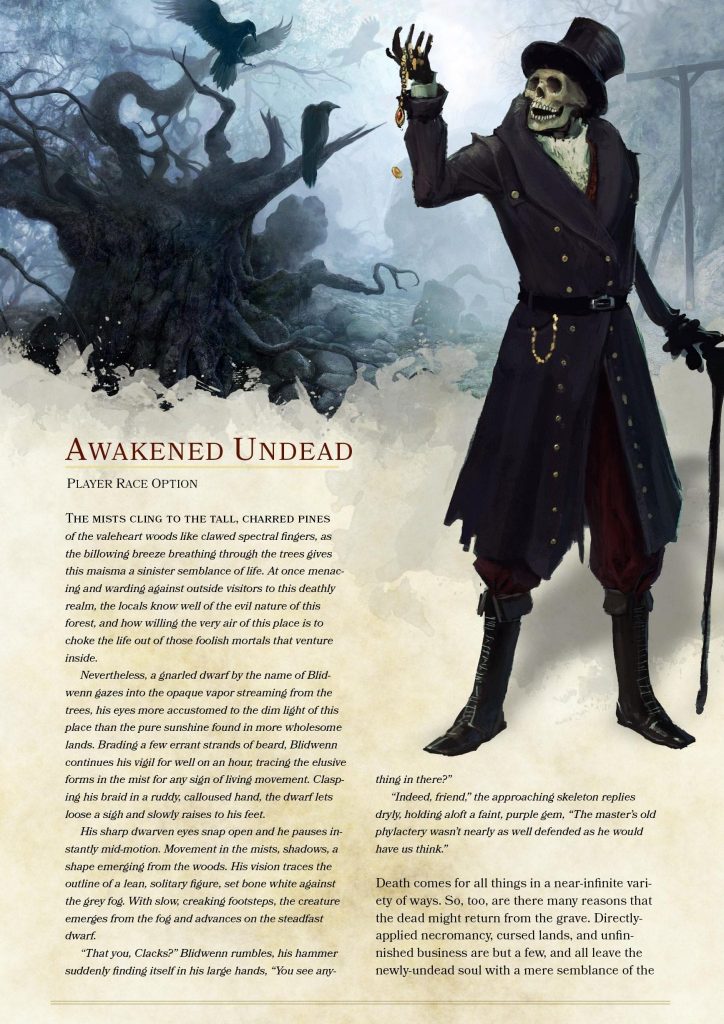
This doesn’t mean that your homebrew race needs to be exactly as powerful as each of the printed races. I mean, there are already some large discrepancies between printed races.
What it does mean is that whatever you make shouldn’t completely overshadow any of the printed races. Your creation should fill a niche within D&D 5e, but it shouldn’t be so powerful that even people outside that niche consider taking it just because of how powerful it is.
On the flip side, you want to make sure that you don’t make the race too weak compared to other options. You want people to play this!
You should try to use the printed races as a guide. Keep your homebrew race within the bounds of those races (don’t worry so much about outliers such as Aarakocra) and you’ll be good as gold.
Use This Handy Guide!
I found this amazing guide by jwbjerk on how to determine if a homebrew race is balanced. The guide assigns a point system to each feature, ASI, speed, and any other racial feature. You can then pick and choose these features and compare them to other races in the Testing sheet or the Racial Score Calculator sheet.
This is an excellent tool for people who are new to balancing homebrew content but still want to make a homebrew race. It’s also a great tool for those that just want to double-check their work.
Now, this isn’t the be-all-end-all of balance. This guide only works if you’re taking features and abilities that have been used before by Wizards of the Coast. If you’re creating a brand new ability or feature then it’s not going to be as accurate, but it’ll give you a solid estimate as to where you’re at in terms of power.
I have used this before and found it extremely helpful. I’m a stickler for balance so it was great for me to have something to check my work. It also really helped me in figuring out what exactly a race is, mechanically speaking.
Conclusions
It’s fun to create new things, though it can be a bit daunting when you are first starting. Homebrew races make a big initial impact but generally will not break the game if you’re a little off in one way or another in terms of balance. They’re the perfect first project for aspiring homebrewers.
As someone who tends to run homebrew campaigns instead of premade adventures, I find that I regularly do some form of homebrewing to the races. Maybe not mechanically, but I’ll regularly reflavor or reskin races to help better fit the world that I’ve created.
Generally speaking though, the best way to come up with a homebrew idea is asking a player. See what it is they’re looking for and figure out if you can think of a way to create a race for them that fits the idea they had. This way you have something unique for your game and you have your first playtester already lined up!

As someone who’s making +15 Subraces for Aarakocras (all with different cultures,abillities and based on a variety of birds. And yes, my Friend/Dm will hate me, but he gave me this power, and i will use it /lh) because they like birds. This is very useful, thank you for making this!
You’re very welcome.
That sounds like an ambitious project. I’d love to see how they come out!
Thank you so much for making this. I have been working on a Homebrew arthropod race with a fair few subraces and this has been a huge help.
As someone who’s currently making a crystal based race just so I can have a wild magic sorcerer who eats crystals, thank you